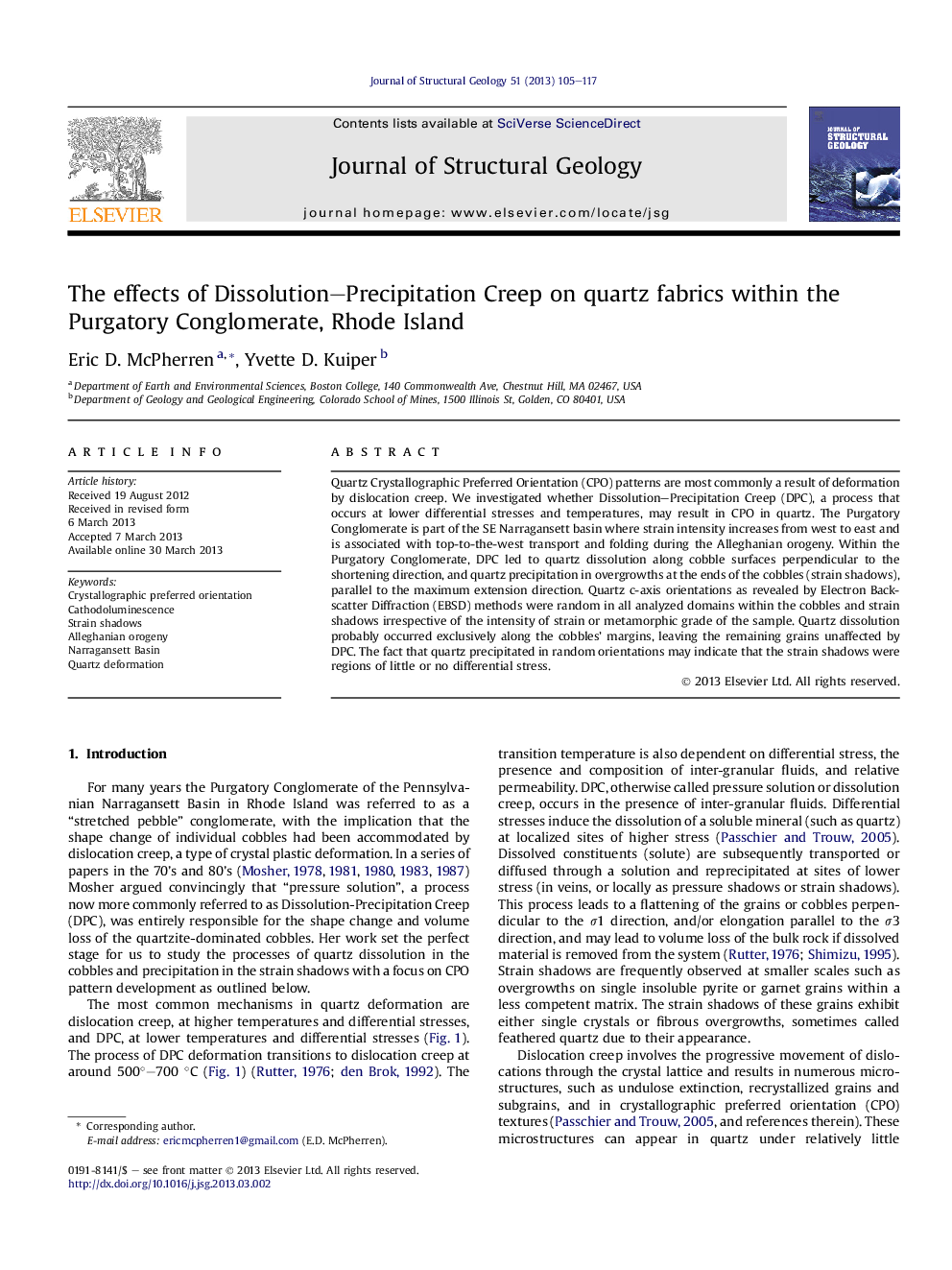| Article ID | Journal | Published Year | Pages | File Type |
|---|---|---|---|---|
| 4733191 | Journal of Structural Geology | 2013 | 13 Pages |
•Quartz DPC did not lead to a CPO within the Purgatory Conglomerate.•A quartz CPO in similar conglomerates, may result from other processes.•Volume loss was accommodated entirely along the surfaces of the cobbles.•Identification of authigenic quartz aided by CL and optical microscopy.•Quartz may have formed in strain shadows under hydrostatic conditions.
Quartz Crystallographic Preferred Orientation (CPO) patterns are most commonly a result of deformation by dislocation creep. We investigated whether Dissolution–Precipitation Creep (DPC), a process that occurs at lower differential stresses and temperatures, may result in CPO in quartz. The Purgatory Conglomerate is part of the SE Narragansett basin where strain intensity increases from west to east and is associated with top-to-the-west transport and folding during the Alleghanian orogeny. Within the Purgatory Conglomerate, DPC led to quartz dissolution along cobble surfaces perpendicular to the shortening direction, and quartz precipitation in overgrowths at the ends of the cobbles (strain shadows), parallel to the maximum extension direction. Quartz c-axis orientations as revealed by Electron Backscatter Diffraction (EBSD) methods were random in all analyzed domains within the cobbles and strain shadows irrespective of the intensity of strain or metamorphic grade of the sample. Quartz dissolution probably occurred exclusively along the cobbles' margins, leaving the remaining grains unaffected by DPC. The fact that quartz precipitated in random orientations may indicate that the strain shadows were regions of little or no differential stress.
Graphical abstractFigure optionsDownload full-size imageDownload high-quality image (283 K)Download as PowerPoint slide
